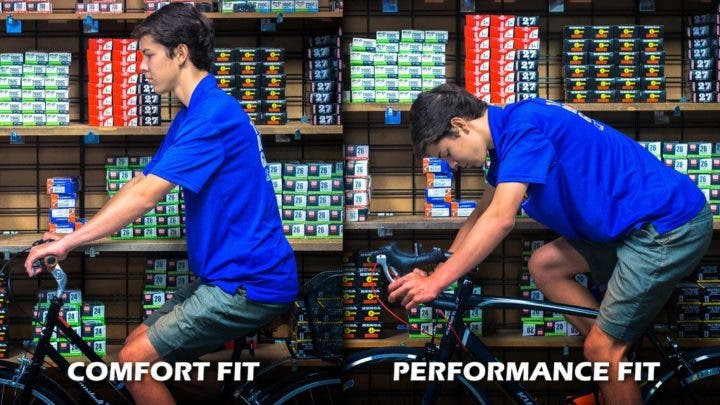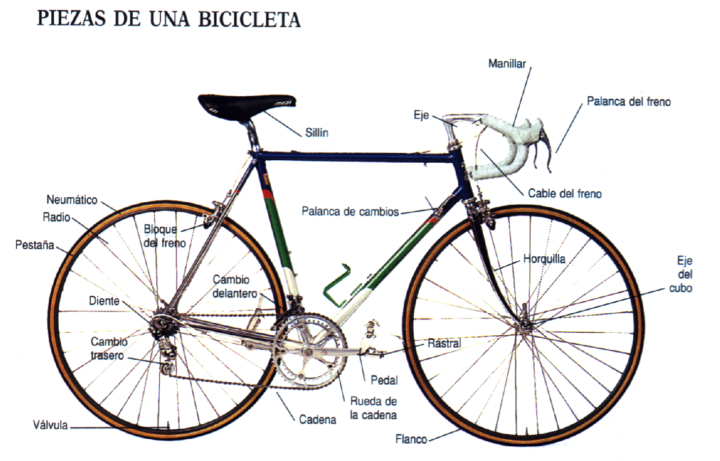Cycling is a low-impact sport as the tendons and joints hardly suffer while running. It requires a good balance and coordination capacity and is very beneficial for health, since its habitual practice reduces the risk of suffering from some cardiovascular diseases and cancer (Cavill and Davis, 2007).
However, it is also true that cycling can lead to some problems and injuries if not done correctly. Among the most important risk factors in this regard is that of a poor bicycle choice or misuse of it.
For that reason, before buying one you should ask yourself questions such as on what surface do you think you will use your bike the most. You should also check that its size adapts well to your anatomical characteristics and know what parts of the bicycle you should review more carefully to avoid being uncomfortable and suffering accidents.
We will help you solve these questions and make your cycling experience satisfactory.
Where am I going to use it?
Depending on the surfaces where you usually plan to mount, you should choose one model or another. The most common are:
- Mountain bike: they are usually used to go on land, but they are also good for circulating around the city.
- City bike: This model has slightly narrower wheels so it is more comfortable to carry around the city.
- Hybrids: This model is a cross between the mountain bike and the city bike. Usually the most suitable for people who start in cycling.

How big should it be?
The first thing to check is that the size and height of the bike fits you perfectly. Before buying it, you should try to raise and lower the saddle and see if you feel comfortable on it.
Other keys to know if the size of a bicycle is suitable for you are:
- Make sure your leg can bend slightly when the pedal reaches the lowest point of the turn.
- Check that your elbows are slightly bent , avoiding being too close or too far from the handlebar.
- Check that when you are straddling the bicycle there is at least 2-3 cm of distance between your crotch and the saddle or even 5 cm in the case of mountain bikes.

How to check that my bicycle is in good condition?
Once you have your bike, you should have basic knowledge about possible problems that could appear on it, in this way you can better prevent possible accidents.
Take note of everything you should review before starting a route:
- Adjust the gears well and check that the drive chain is in good condition.
- Regularly lubricate the chain with oil. In the event that it is rusty or frayed, it is better to replace it.
- Check that the gear teeth are okay. In case any teeth have come loose or the chain ring is bent, replace them.
- Check that the spokes of the bicycle are well tensioned.
- Check that the bike’s brake pads are not rusted and that the gearshift lever can be moved easily.
- Check that the tires are not damaged and that they have good pressure . To do this, get yourself a good air pump .
- Make sure the front steering bearing is working properly by activating the front brake and pushing the bike back and forth.
- Check the crankshaft bearing by grasping it and trying to push the bike and pull it towards you from both sides. If you notice something loose, you should also change it.
- Lastly, check that you can adjust the seat height properly by loosening the screw on the seat post and sliding it up and down. If it is too attached, it should be checked by a specialist.

conclusion
If you want to start cycling seriously, it is important that you get a good bicycle even if it involves a high cost at the beginning, since you will be investing in your comfort and in reducing the chances of suffering a fall.
Once you have it, it is important that you are clear that the key parts of your bicycle are always in good condition, so you can enjoy the benefits of cycling for a long time.
References
- Cavill, N. and Davis, A. (2007). Cycling and Health: What’s the evidence ?. Cycling England, London.
- Kidd, S. Beginner Cyclists: A Program to Get You Started. For Breakingmuscle.com [Reviewed September 2015].
- Orenstein, BW (2011). How to Choose the Best Bike for You. For Everydayhealth.com [Reviewed September 2015].
